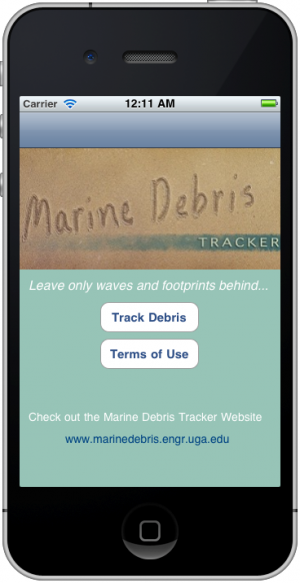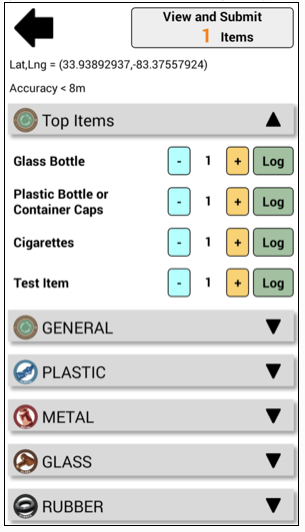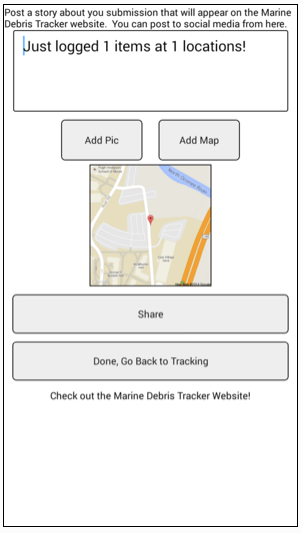Table of Contents
Your can use beach clean ups to create data about local marine plastics larger than 5mm (macroplastics). This protocol uses the Marine Debris Tracker to log items so that data goes into a public data set that scientists can use. If you are doing a beach clean up in Newfoundland between September 1, 2015 and June 30, 2016, Civic Laboratory has a grant for comparing data results between different recording technologies; if you would like to participate, please contact the lab by email (clearlab@mun.ca).
The Marine Debris Tracker is used by Civic Lab, but was created through a joint partnership of the NOAA Marine Debris Division and the Southeast Atlantic Marine Debris Initiative (SEA-MDI), located within the College of Engineering at the University of Georgia.

Timelines
The best data comes from repeating beach clean ups so you can see how much new plastic is washed up each time. This can tell you whether local efforts to reduce plastic waste are working, or whether plastics from far away are washing up on your shores in varying numbers. Since plastics and other floating debris are impacted by the season and weather, we recommend doing yearly beach clean ups in the same month each year. For high resolution data about your area, doing a clean up once a week for a period of time will give you more accurate loading data than doing yearly clean ups. Choose a timeline that best suits your resources and what you want to know.
How to do a scientific beach survey
- Before arriving at the site, check local tide tables and plan to arrive at your site during low tide. Upload the Marine Debris Tracker to a WiFi-enabled phone or tablet and create a user account (free and fast, and one group can use the same account or the public account). When you test the app, be sure to delete any entries or they will upload to the public database.
- Choose where the “edges” of your beach are using landmarks, flags, or stakes. Make sure everyone in the group knows the area you will be cleaning. Also decide how high up the shoreline you will be picking. If you are repeating the clean up, keep these edges the same each year.
- Choose a walking pattern. Surveyors should traverse the survey area in a per-determined walking pattern until the entire site is cleared of marine debris. If you have many volunteers, divide the beach into sections and have each person or pair of people walk the pattern within their area.


- Choose a minimum debris size. This size is required to keep surveyors counting the same size items and to help keep the survey results uniform. A quarter is about 2.5cm. You can always pick up smaller items, but not log them. Keep this size the same each year.
- The easiest way to pick up trash and log items is to work in pairs. One person picks up items and puts them in a trash bag while s/he calls out the object, and the other person logs the item in the Marine Debris Tracker. Even if the phone or table is not hooked up to the Internet or SMS, the app will geotag each item. So it is important to log the items at the beach. You can log items that aren’t plastic as well. You can take photographs and add comments to items if you’d like. You can view your logged data when you press View & Submit. You can continually submit data if you’re connected to WiFi or cellular service, or if you’d prefer, you can submit once you are home. The data will remain geo-tagged where you added items.





- Reuse, recycle, or dispose of your collected items. Keep in mind that the longer something has been in the ocean, the more its density changes, so things that are in the ocean for a long time are less optimal to recycle because they had different properties than the rest of the plastics.
- You can find your data on the Marine Debris Tracker Website. You can also look at other data collected in your area.

Hi your link for the Marine Debris Tracker is broken… is this the one you use? https://www.youtube.com/watch?v=LzobdbAckws&t=54s
Thanks for letting us know! We’ve updated it: https://debristracker.org/